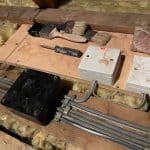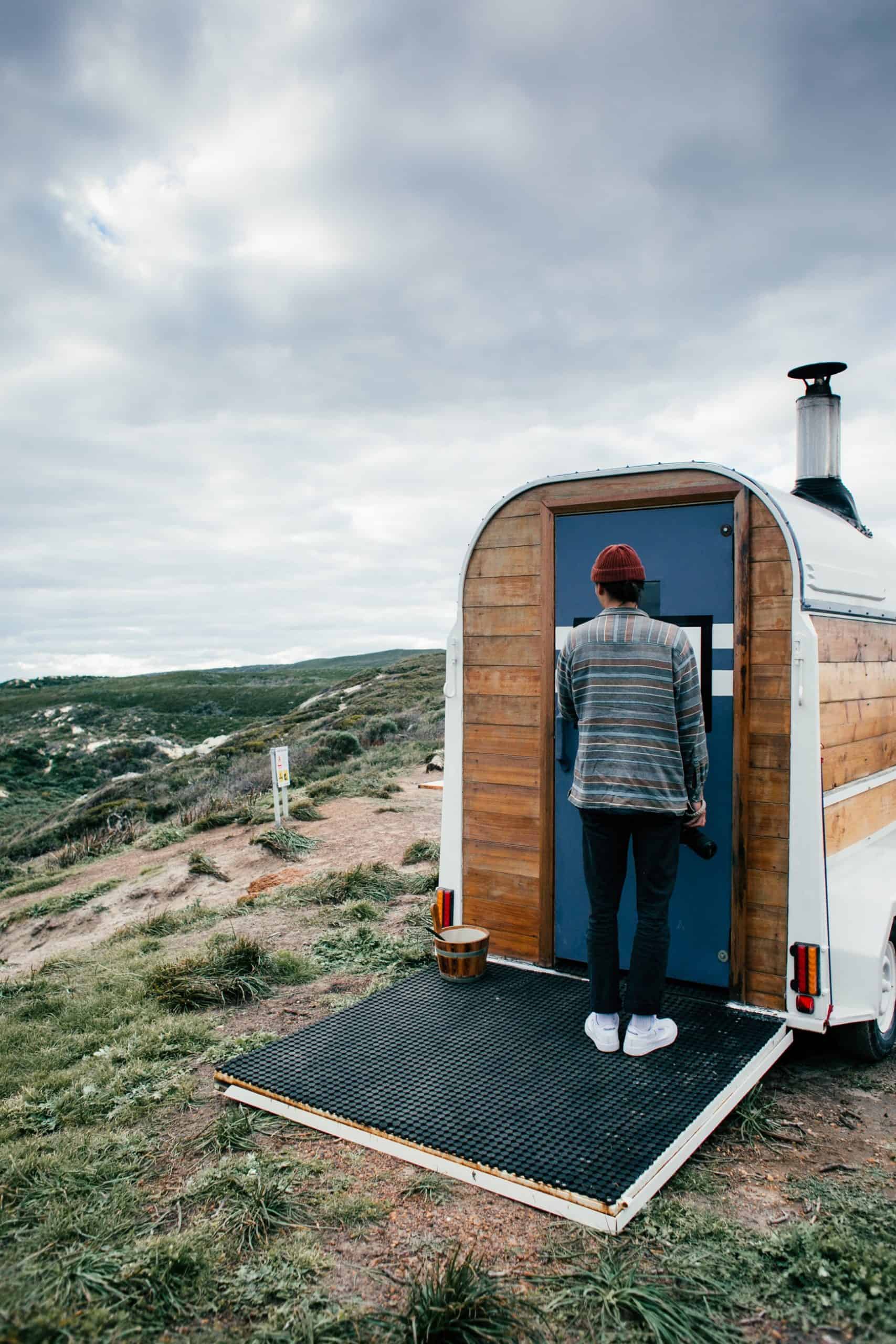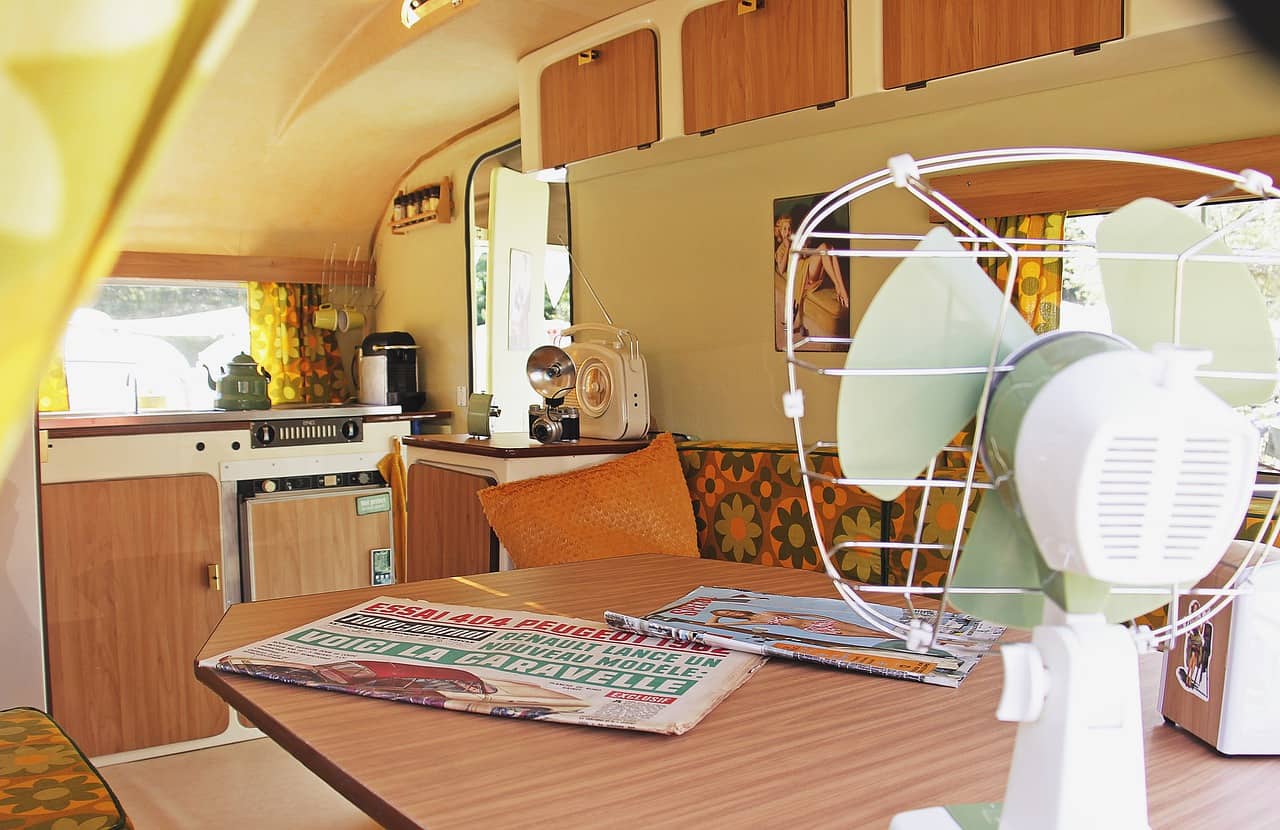In the summer months, portable air conditioners provide fast and effective relief from hot temperatures indoors. In some spaces, such as RVs, trailers, or off-grid buildings, inverters are used for powering electrical devices like portable AC.
Will an inverter run a portable air conditioner?
Inverters can run portable air conditioners, they come in different sizes and are capable of providing varying amounts of power. A minimum of 2500w is required to run a small portable air conditioner. Medium-sized portable ACs need around 3500w, while larger units will need a 5000w inverter
If the inverter doesn’t provide the necessary wattage output that your portable air conditioner needs to function properly, it may work for a short while before it drains your battery.
Portable air conditioners have a BTU size rating, which correlates with their power consumption. The larger the BTU of the portable AC, the more powerful your inverter will need to be. We’ll explore this topic in detail in the sections below.

Will an Inverter Run a Portable Air Conditioner?
Inverters are suitable for running a portable air conditioner, especially in an environment where main power is not available.
However, this doesn’t mean that you can use an inverter for this purpose. It must provide enough wattage to cater to the power consumption and BTU size of the portable AC.
- There are two main types of inverters – modified sine wave, and pure sine wave. For powering a portable AC, I’d highly recommend sticking with a pure sine inverter as they are generally better suited to this purpose.
This is because pure sine wave inverters output the electrical current to a portable air conditioner in the same way that main power does.
Compared to modified sine wave inverters, they are more efficient and are designed specifically to be used with high-power devices and appliances.
It’s important to ensure that the inverter you would like to use is powerful enough for your portable air conditioner. If you use an inverter that lacks the required power, it will result in the battery draining quickly, or may simply not work at all for this purpose.
Both portable air conditioners and inverters come in many different sizes, with varying power ratings. In the table below, you can see the recommended wattage of the inverter that you’ll need for different air conditioner sizes.
| AC Power Consumption | British Thermal Unit (BTU) | Required Inverter Wattage |
| 1.5kWh | 5000 | 2000W |
| 3kWh | 10000 | 3500W |
| 3.5kWh | 12000 | 4000W |
| 4.5kWh | 15000 | 5000W |
As you can see from the table, a small portable air conditioner will require a lower-powered inverter of around 2000W. This type of portable AC may be suitable for small spaces, like trailers, campervans, or RVs.
If you’re using a mid-sized portable air conditioner, you’ll need somewhere in the region of 3000W-3500W from the inverter.
Larger portable air conditioners which are most likely to be used in rooms that get particularly hot and have a lot of space to cool will require the most powerful of pure sine wave inverters which can output somewhere in the region of 5000W.
The figures in the table above are estimates based on the general specifications of most portable air conditioners and inverters. Therefore you should check for the exact numbers of your devices before using them together.
What Size Inverter Should You Use to Run a Portable AC for Camper/RV
Using a portable AC in a camper or RV is a great way to cool down the vehicle in hot weather.
You must use an inverter that is of a suitable size so that it can sufficiently supply the necessary power to the air conditioner without flattening your battery.
If you’re only using the inverter to run a portable air conditioner, you simply need to choose one that is capable of handling the power consumption of that device.
On the other hand, if you plan to use the inverter to run multiple appliances simultaneously, you’ll need a larger, more powerful variety.
Peak wattage is the highest amount of power that an appliance uses.
It’s a good idea to add up all of the peak wattages of the appliances that are likely to be used together, such as a portable air conditioner, coffee machine, TV, and laptop.
Once you’ve determined the total wattage of the portable AC and other devices, you can look for an inverter that is capable of supplying at least this. Inverters for campers and RVs range from around 2000W to 5000W, so you have plenty of options to choose from.
If the inverter you choose is only capable of providing the power that the portable AC consumes with hardly any leftover for other appliances, you can try turning them on one at a time, which is known as staggering. This will reduce the peak wattage that the inverter has to handle.
Will a 2000W Inverter Run an RV Air Conditioner?
As the table in the earlier section displayed, 200W inverters are the smallest available for powering portable air conditioners. RVs are relatively small spaces, so it’s unlikely that you’ll need a large AC to cool the temperature.
If your portable AC is rated at 5000 BTU or less, it will likely consume around 1.5kWh. This means that a 2000W inverter will be sufficient to run the air conditioner in your RV, or camper.
Larger RVs or campers may require a more powerful portable air conditioner to effectively cool their inside. This is because there will be more hot air present, meaning the unit needs to work harder to remove the heat and moisture.
A portable air conditioner that is rated around 7500 BTU may also be usable with a 2000W inverter, providing the wattage consumption doesn’t exceed the maximum wattage output of the inverter.
If you have a portable air conditioner that exceeds 7500 BTU, you won’t be able to use it in your RV with a 2000W inverter. You’ll need to invest in a larger inverter to provide adequate power to the appliance.
While larger inverters are more expensive than their smaller equivalents, they will allow you to run more appliances simultaneously in your RV. This means that you can have the portable AC running while using other electrical devices at the same time.
It’s therefore worth considering investing in a larger inverter to ensure that your portable air conditioner can run whenever you need it, and you won’t need to switch it off to make a cup of coffee or run any other electrical appliance.
Take a look at this super useful YouTube video that will help you set up your inverter.
What Are the Disadvantages of Inverter AC Combination?
We’ve covered all of the reasons that using a portable AC with an inverter can be useful and practical, but there are some downsides that we must also take into consideration.
The first issue is that inverters can be tricky to install in an RV, camper, or other indoor space if you’re inexperienced with electronics.
The process involves connecting the inverter to a battery and requires some knowledge and skill to do properly.
Compared to simply using the mains power, using an inverter requires significantly more work and time spent setting it up. However, in many vehicles or campers, main power isn’t an option.
Another potential disadvantage of using an inverter/portable AC combination is that you must ensure that the power rating of both devices matches up, or you could drain the power from your battery in a matter of minutes.
This could be very inconvenient if you’re away from home with no way of solving the problem.
Furthermore, the inverter will take up space that needs to be accounted for. The plugs, cables, and wiring must be stored away securely so that it won’t get dislodged or cause any injuries inside the space you want to cool down.
You’ll also need to accurately determine the total wattage requirements of your portable AC and any other appliances that will be running off the inverter. This process can take a while, especially if you have many different electrical devices that need power.
If you calculate this incorrectly, it could result in the inverter being insufficiently sized and unable to handle the total wattage of all the appliances that you want to power from it.
Overall, combining an inverter and portable AC is an effective way to cool down a space where mains power is not readily available.
Related Questions
Can an inverter run a refrigerator?
Inverters can run any electrical device, providing they output sufficient wattage to facilitate the operating power consumption of the device. A large inverter is certainly capable of running a refrigerator.
What can I run off a 2000w inverter?
Using a 2000w inverter, you can run any electronic appliance that has a power consumption of less than 1500kWh. This includes small portable air conditioners, electric stoves, freezers, small refrigerators, and televisions.
What is the difference between an inverter and a converter for an RV?
In an RV, the inverter transforms DC to AC voltage, while the converter does the opposite. These devices essentially switch between 12V and 110V, so that you can use different appliances in your RV.




